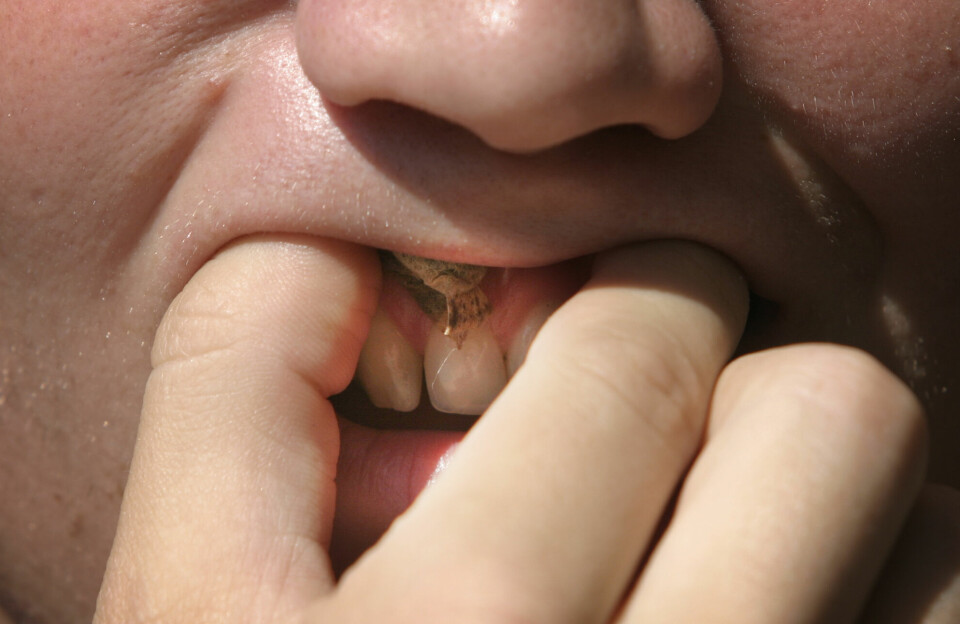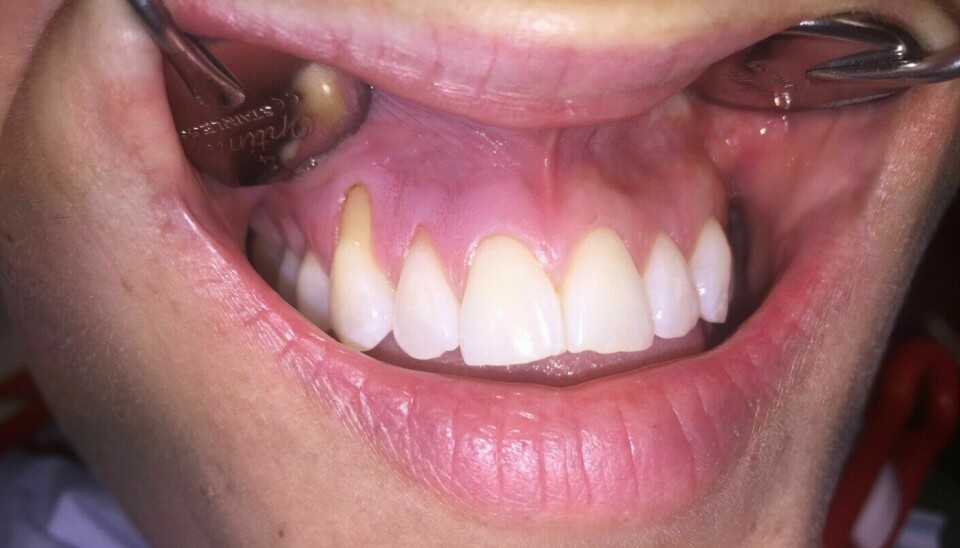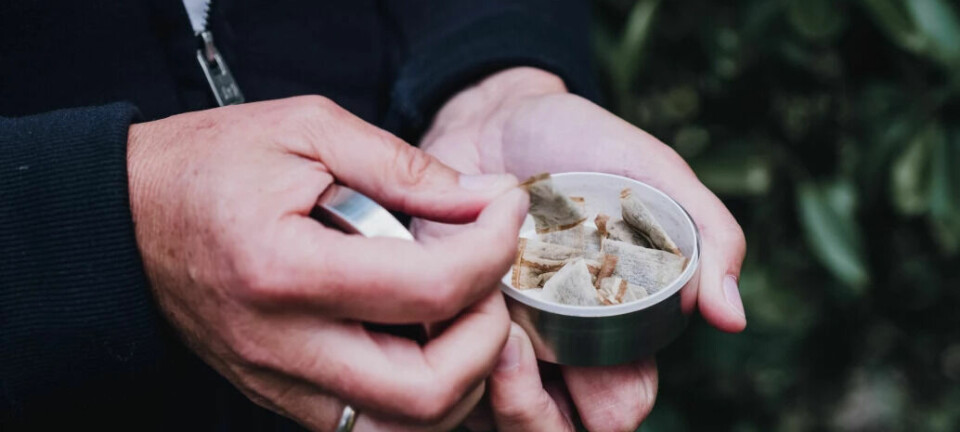
Norwegian study sheds light on how harmful snus is for your gums
One group was more prone to permanent gum damage than others.
There is still a great deal we do not know about what snus does to a person’s health.
One thing is certain, however: Many snus users have discovered that their dentists can detect their snus use.
So how bad is snus for your gums?
Want young people to know the consequences of using snus
In a study published in February 2023, Norwegian researchers investigated nearly 1,400 people between the ages of 18 and 20.
They were at the dentist when they were asked to take part in the study. Just over 200 of the participants used snus daily.
Simen E. Kopperud is one of the researchers behind the study. He works at the University of Oslo (UiO) and the Nordic Institute for Dental Materials. He is also a dentist, and says that one purpose of the study was to be able to use the results to let young people know about the effects of using snus.
He himself sees many snus-related damages at the clinic.

Used snus three years on average
“We mainly wanted to be able to demonstrate local effects in the mouth. If teeth and gums are affected quite quickly after starting to use snus, that may be more significant for a young person than the risk of long-term health effects,” Kopperud says.
The young adults who took part in the study had been using snus for an average of three years.
The researchers found that a lot can happen to the gums over such a short period. Kopperud is not surprised.
Reveals occasional snus users
“That number was somewhat expected; I see this in the clinic as well,” Kopperud says.
He can almost always tell if a patient uses snus or not by looking at their teeth and gums.
“Some patients tell me that they only use snus at parties,” Kopperud says.
Even then, it’s often visible.
“In clinical practice, I always comment on it when I check the mucous membrane and see snus-related damages,” he says.
You can also check yourself in a mirror. You can lift your upper lip and see that the gums are whitish and wrinkled where you usually place the snus pouch.
“Hopefully this can be a motivation to stop using snus,” Kopperud says.
On 18 January 2024, the national newspaper Aftenposten wrote an article about figures on snus use from Statistics Norway. These numbers show a doubling of snus use in Norway over the last ten years. The greatest increase was among the young.

More use, worse outcomes
In the study, Kopperud and colleagues distinguished between loose snus and snus in pre-packaged pouches. However, very few used loose snus.
That meant it wasn’t possible to examine which type of snus is worse for the gums. Participants were also asked how regularly they used snus.
“The study showed that the more tins of snus you use, the more serious the damage,” he says.
The researchers also distinguished between two different types of damage. One was changes in the surface of the gums, when they become white and wrinkled.
A particularly vulnerable group
The damage was more serious for one in five snus users. These individuals experienced gum recession around some teeth, revealing more of the tooth surface.
“This is far worse damage because it's permanent,” Kopperud says.
One group was particularly vulnerable: boys.
“We speculate whether it’s the strength of the snus that is the cause – stronger snus with a higher nicotine content,” he says.
He clarifies that this remains pure speculation. He believes it could also be that young boys keep snus under their lip for longer than other users.
It could be that subsequent research will come closer to a definite answer.
Develops quite quickly
The risk of such damages increased with the number of months and years the patients had used snus. Nevertheless, a significant proportion had such damages after an average of three years of use.
However, there is a silver lining for those who manage to stop using snus.
“The mucous membrane in the mouth will regenerate quite quickly when you stop using snus,” Kopperud says.
This means that smaller lesions, where the gums are whitish and wrinkled, return to normal again. This can happen within a few weeks or months, according to Kopperud.
There is also hope for receding gums. Admittedly, not without effort.

Quitting snus is essential for positive outcomes
“You can help bring the gums back, but it requires a small operation,” Anders Verket tells sciencenorway.no. He is an associate professor at UiO's Department of Clinical Dentistry.
He says that the operation is not guaranteed to be successful. And one thing is for certain:
“It obviously requires you to stop using snus; otherwise, nothing will grow back,” he says.
Likely increased risk with poor oral hygiene
Verket also works as a dentist in addition to conducting research. He sees the same as Kopperud.
“You can see from their mucous membranes that some people are snus users. They develop a characteristic pattern under their lip. This is a change that is reversible in almost everyone,” he says.
He assumes that certain individuals may be more susceptible to this kind of damage or change.
“Some people have very thin bones and thin gums,” he explains.
Thin gums are probably more easily damaged than stronger gums.
“I'm also fairly certain that poor oral and dental hygiene will increase the risk,” he says.
Poor dental hygiene increases the risk of inflammation in the gums. This in itself is a risk factor for receding gums.
Using snus adds an additional risk. Verket clarifies that there has not been enough research conducted on these issues to draw definitive conclusions.
Limited research
Overall, there are few problems with snus that have been proven in research, other than the fact that gums can turn white, wrinkled, and recede.
“But in my eyes, this is one of the areas where there is far too little research. Although we can't show an increased risk of gum disease, that does not mean that there is no risk,” Verket says.
The gum disease he is referring to is periodontitis. This is chronic inflammation of the gums that causes them to break down.
Snus is used in many places in the world, but not Scandinavian snus.
It is difficult to study the damage caused by different types of snus, according to Verket.
Nor is it something that is of international concern, as Norway and Sweden are the only countries that have a significant consumption of the type of snus used in Scandinavia.
Reference:
Kopperud et al. 'Oral lesions associated with daily use of snus, a moist smokeless tobacco product. A cross-sectional study among Norwegian adolescents', Acta Odontologica Scandinavia, 2023. DOI: 10.1080/00016357.2023.2178502
———
Translated by Nancy Bazilchuk
Read the Norwegian version of this article at forskning.no






































